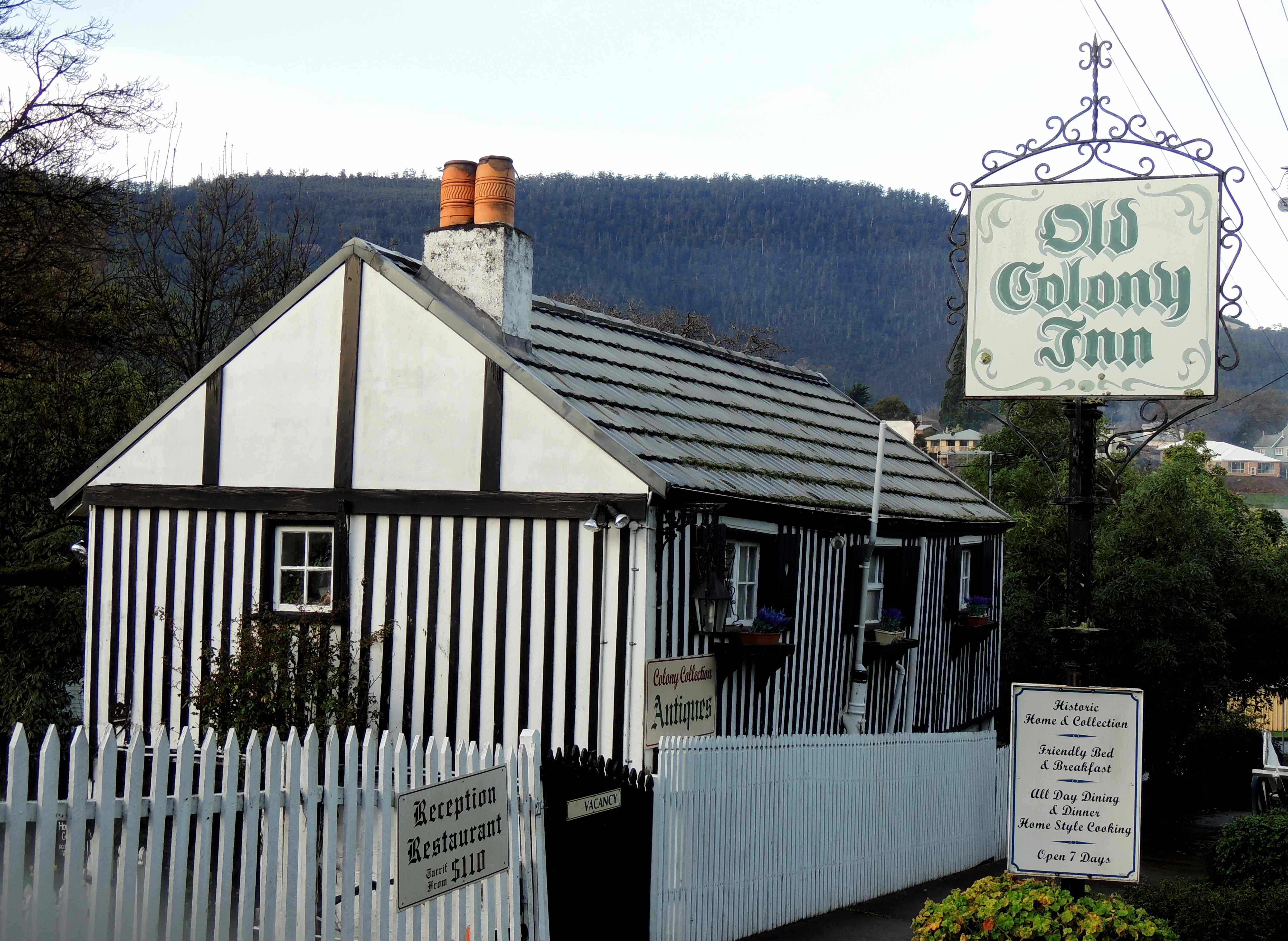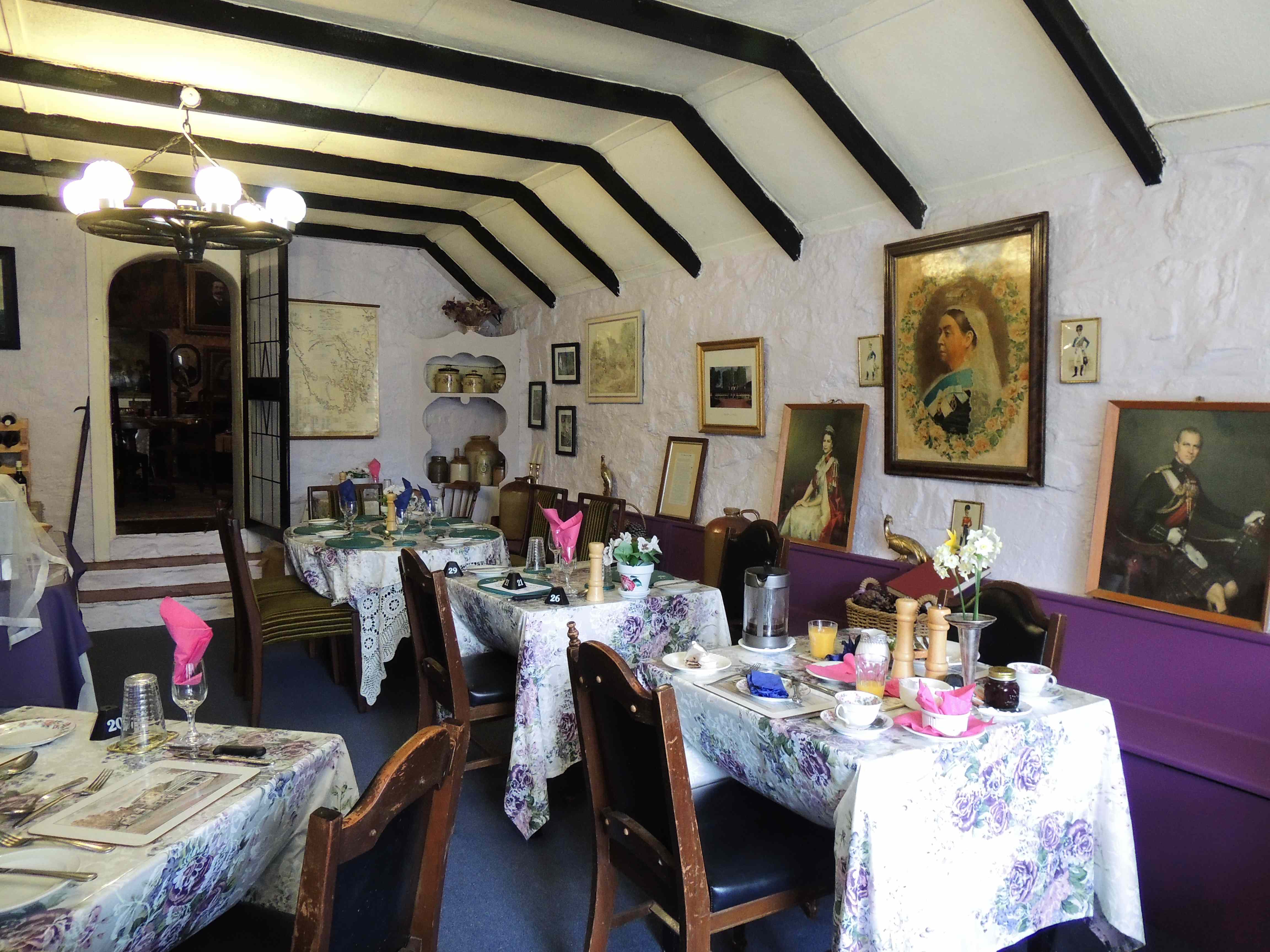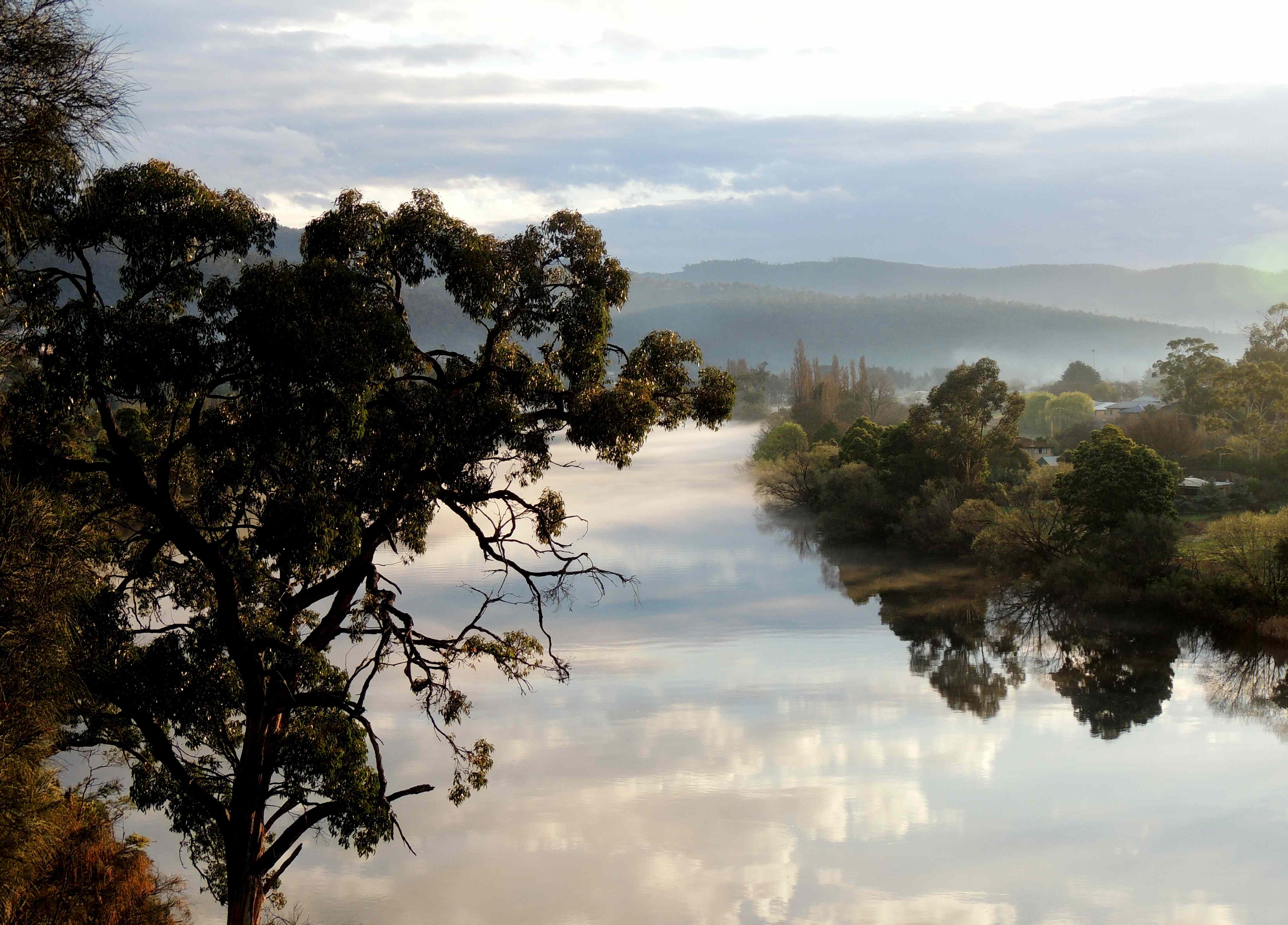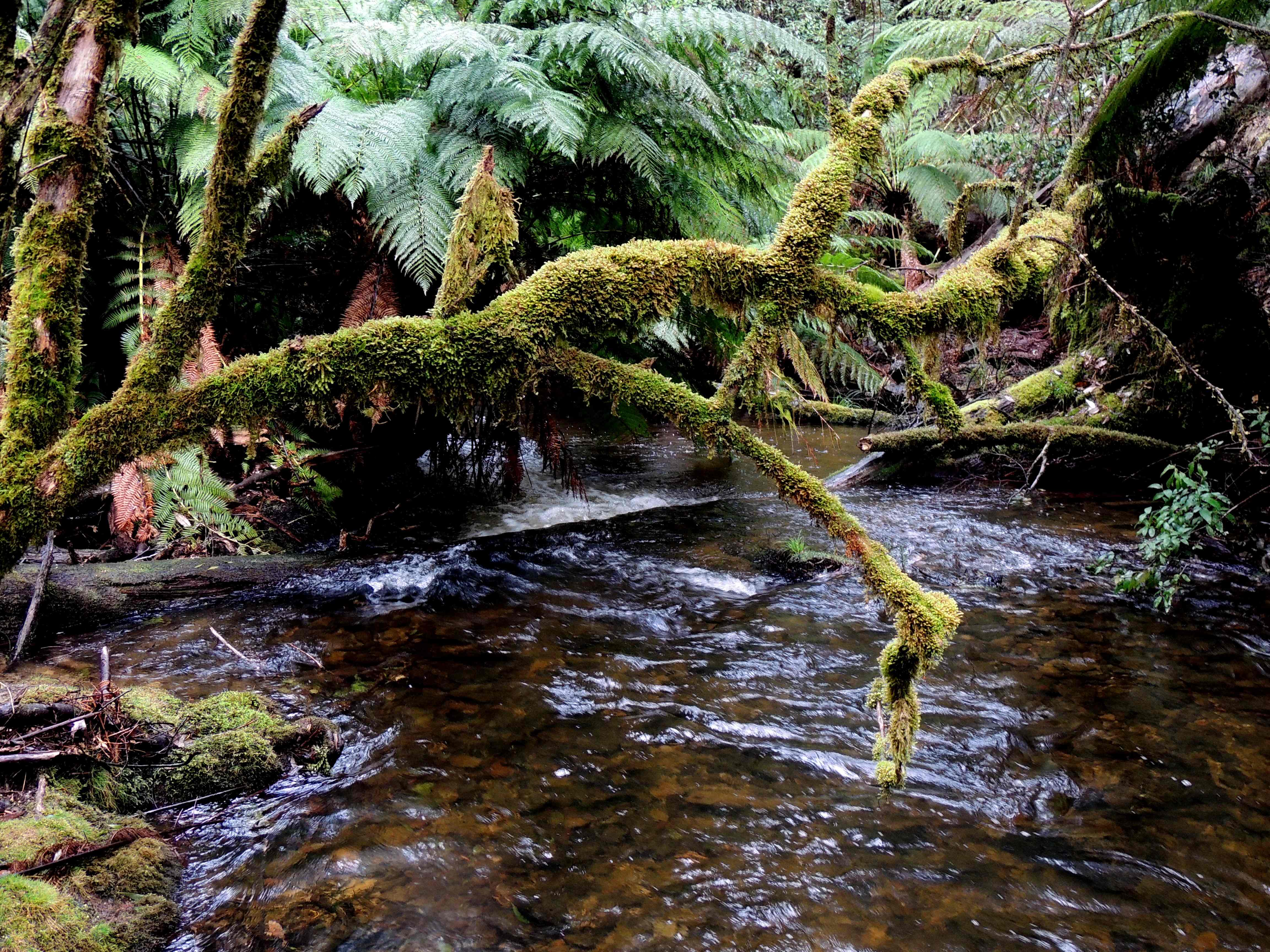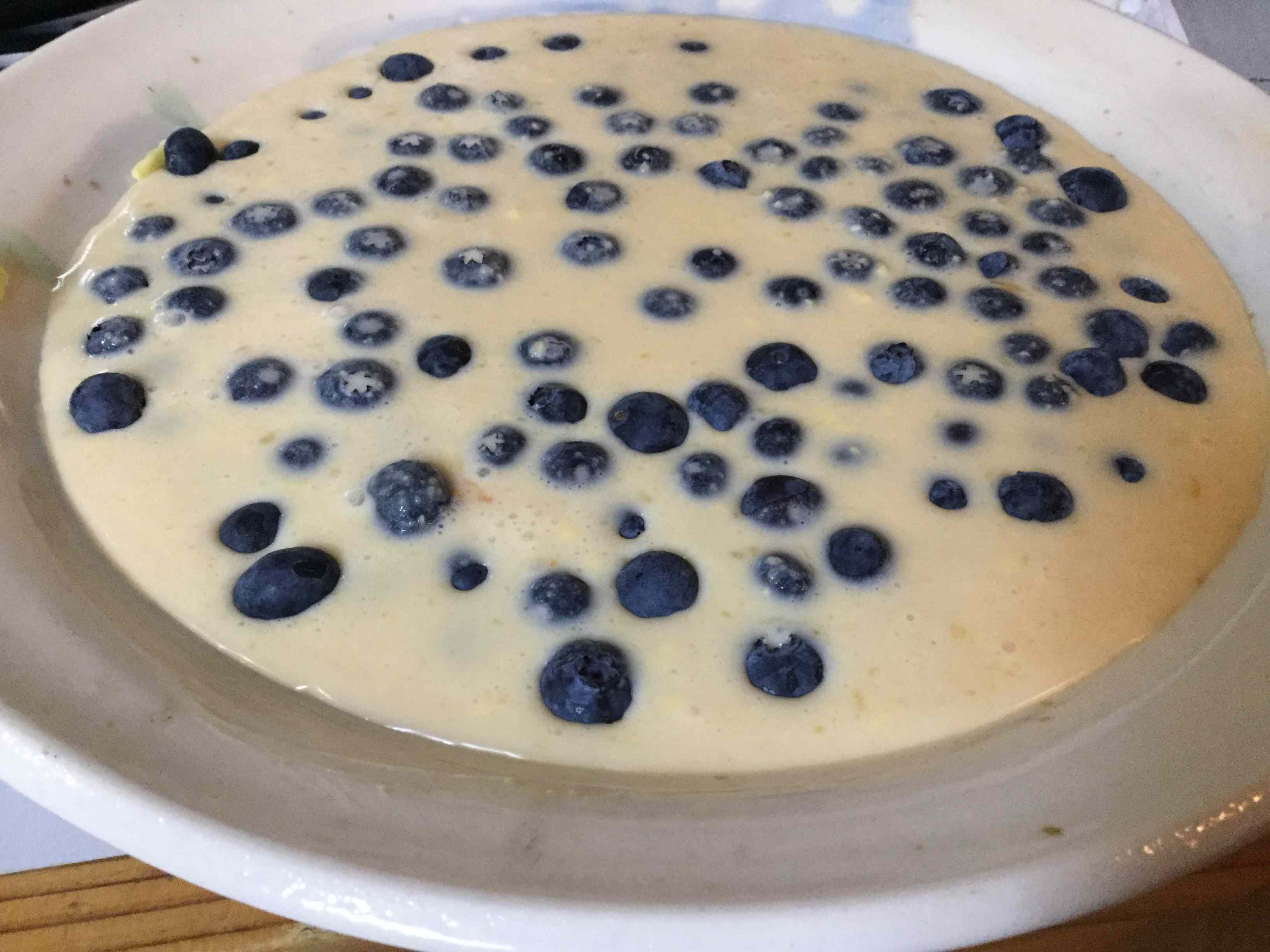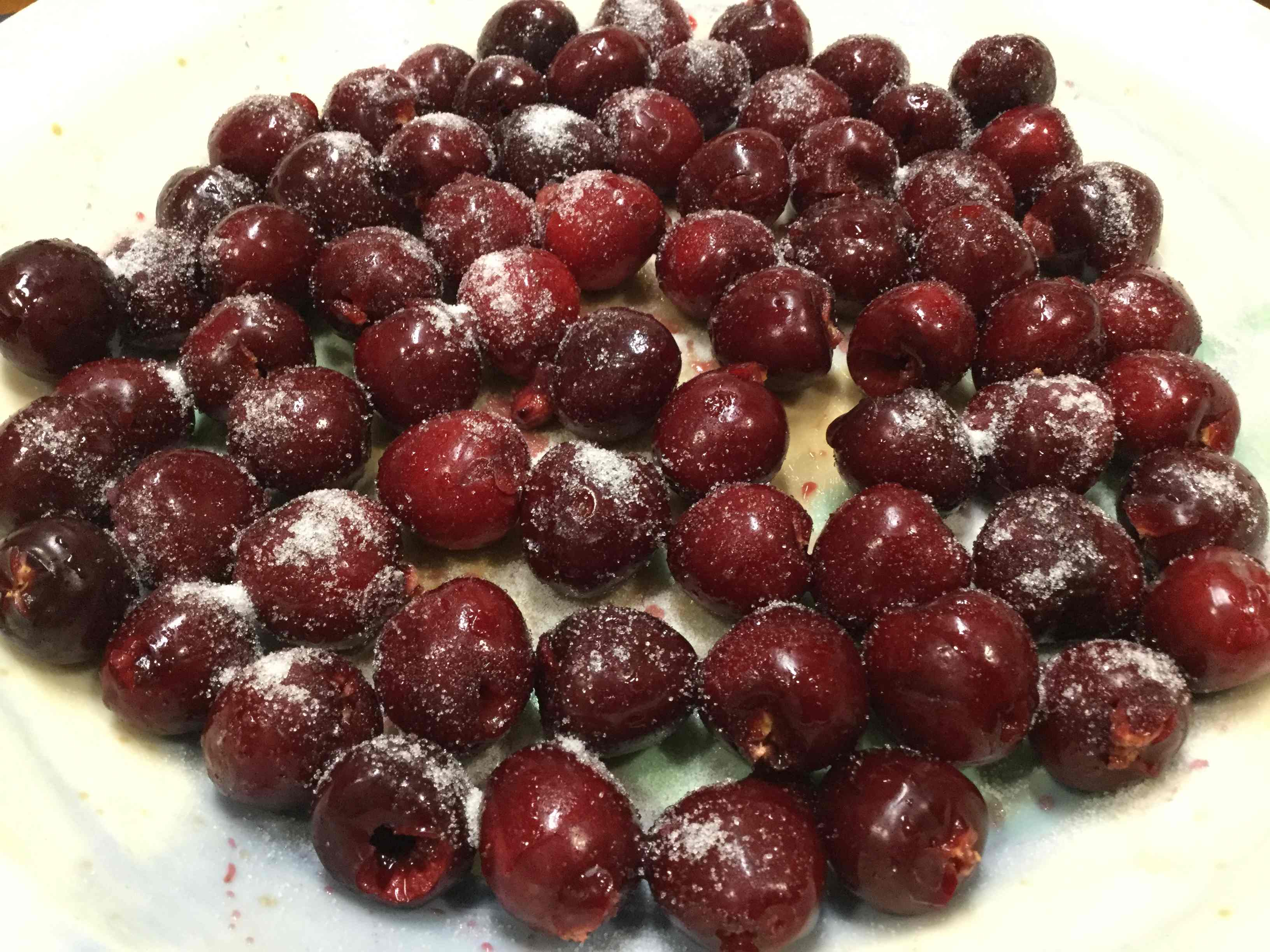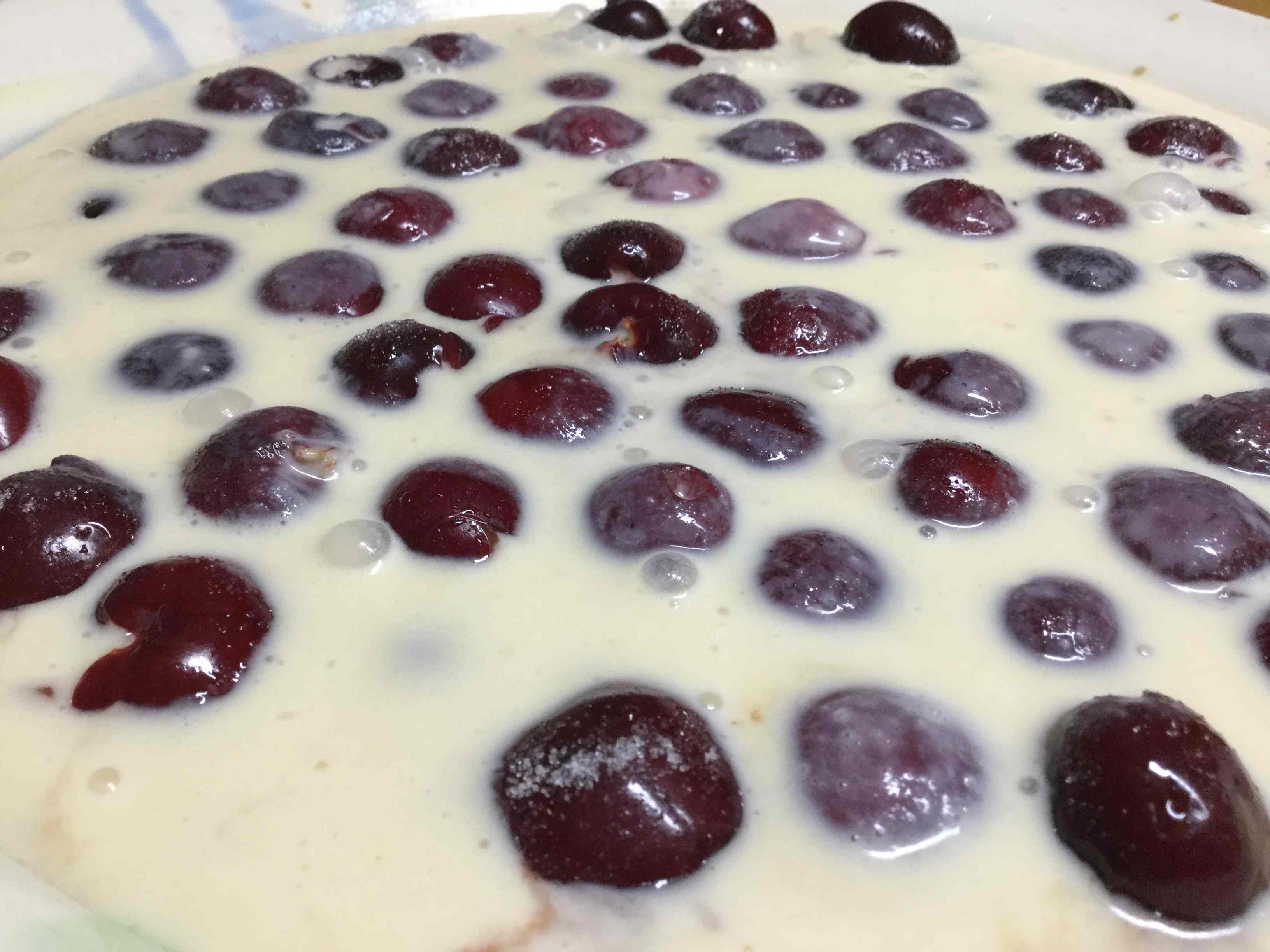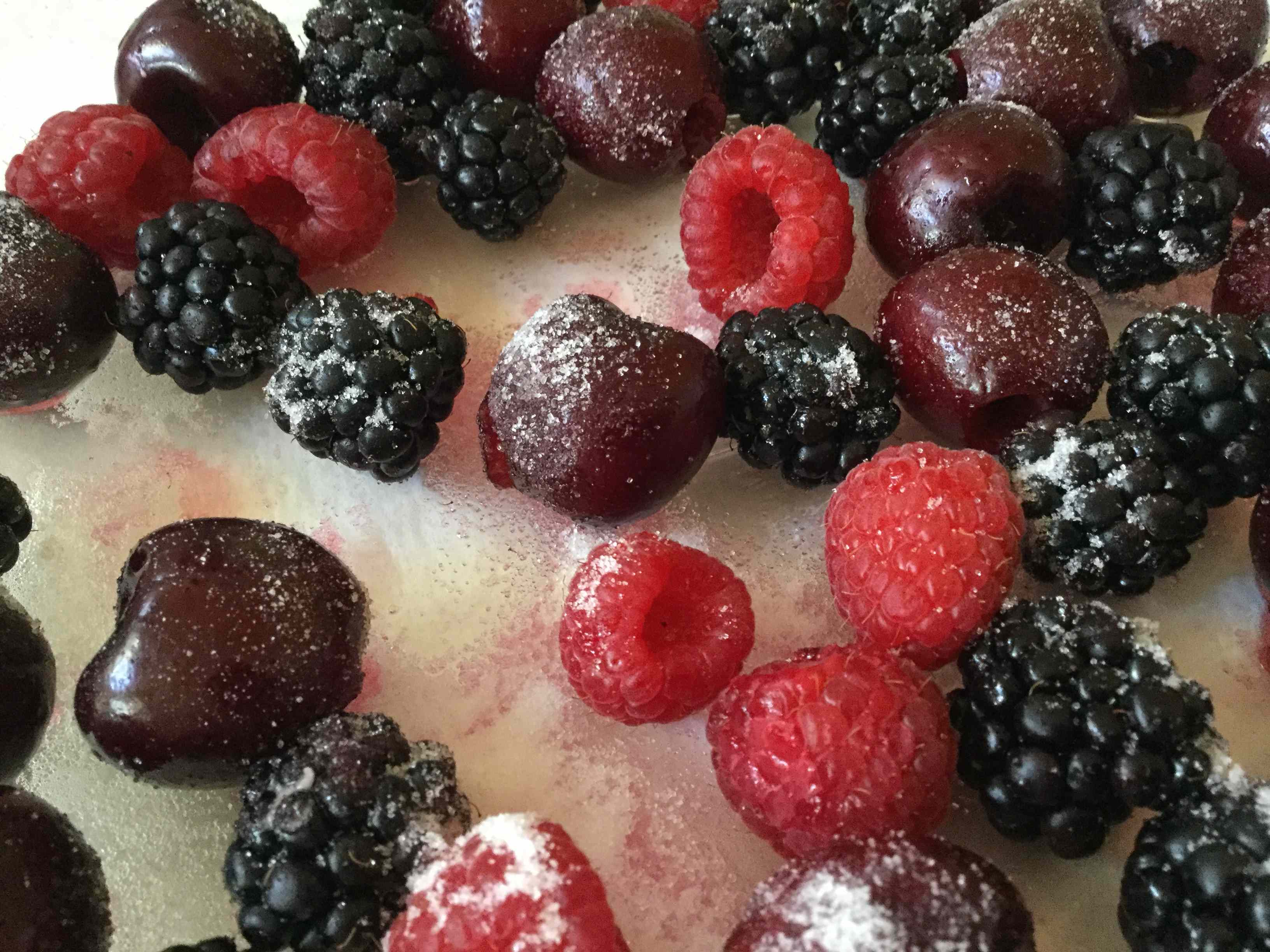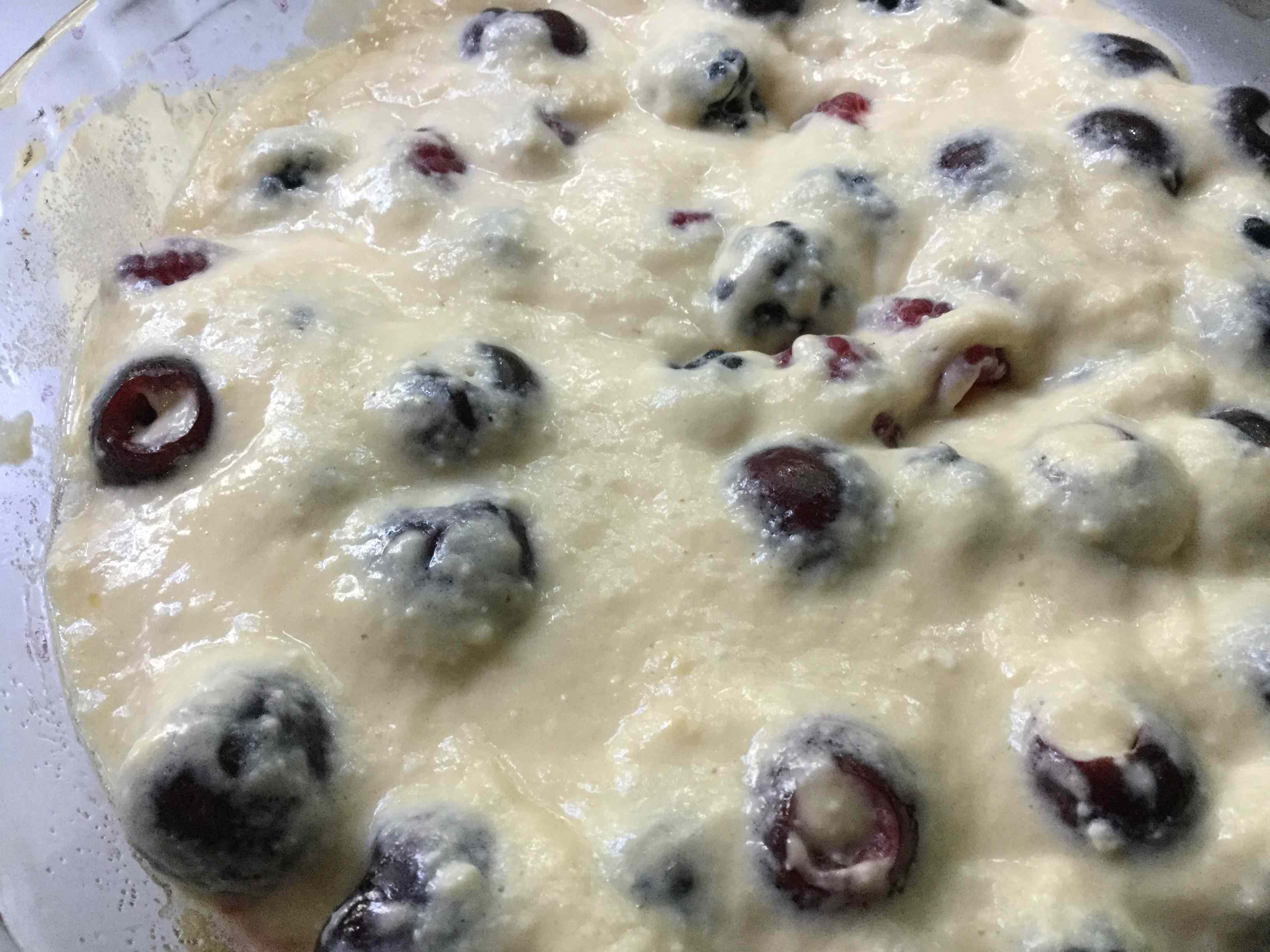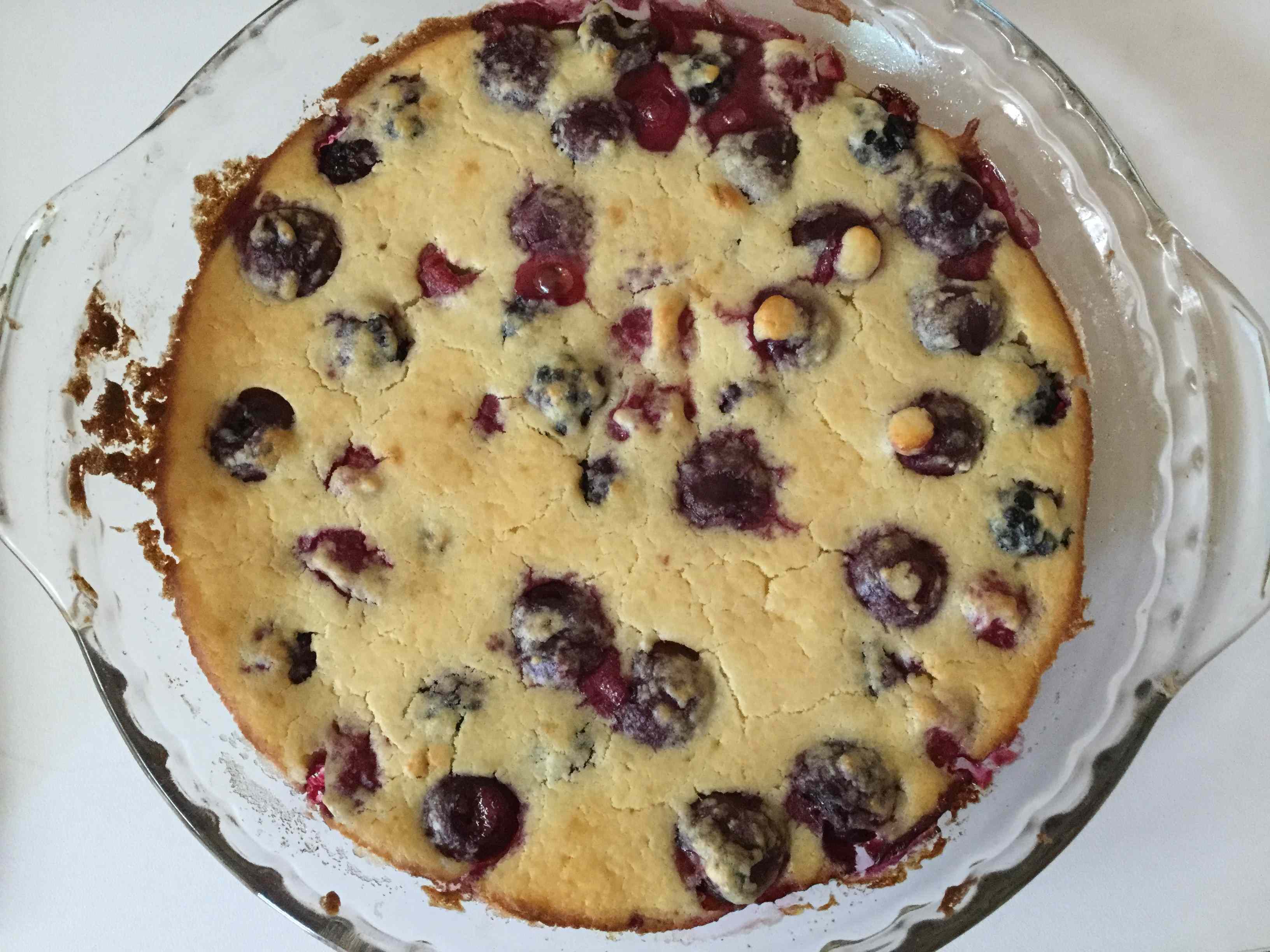Note: Recipe for clafoutis with ricotta updated May 2020.
New Norfolk is an historical town 35 kilometres and 35 minutes’ drive north-west of Hobart. It is there that the sea water of the Derwent estuary ends and the fresh water of the Derwent River takes over, with the river taking on a totally different character and appearance. The fresh water section of the river snakes through glorious countryside to its source at Lake St Clair in the centre of the State.
New Norfolk is a convenient base to explore the region. We spent three days there in September but could have stayed longer. There is plenty to interest those seeking food and wine pleasures.
It was in New Norfolk where we had an interesting version of clafoutis (sometimes written as clafouti).
This post is largely photographic but it includes recipes for clafoutis that you might want to try.
Colonial remnants
We stayed at the Old Colony Inn. Over 200 years old, it is now an accommodation place, an occasional restaurant and a bric-a-brac outlet. It is not necessarily the type of accommodation or food that will suit everyone, but we thoroughly enjoyed our time there. In an olde-worlde dining room, some of the dishes were quite modern.
Derwent Mist
On a late afternoon walk, remnant winter mists hung over sublime reflections on the Derwent.
Mt Field and Russell Falls
One of our goals was to visit Mt Field National Park, about 35 minutes from New Norfolk. There we hoped to visit the Russell Falls and make it to Lake Dobson and do a walk around the Tarn Shelf. On the drive up, the lushness of the countryside was apparent. However, bad weather set in, which meant we could walk into the falls, but not drive up the mountain road. The wet weather did have a positive side as the falls were in full flow.
A Fascinating Meal
For the Saturday night, we had booked in for dinner at the Agrarian Kitchen Eatery and Store. It was a memorable meal for a mix of reasons: eating in an old mental asylum is remarkable in itself; the restaurant is a mesmerising space, with its length, high ceilings and large windows; and dishes that seemed a tad strange, minimalist or confronting while at the same time being intriguing. We would give the experience top marks.
Our photos were not good enough for posting, but we have included one photo from the restaurant’s website. We have also included the menu for that evening.
Clafoutis
(Updated with an alternative recipe and photos on 23 January, 2018 – see below.)
This dish dates from at least the early 1800s. Sometimes it is written as clafouti. Clafoutis – with the ‘s’ (which is not pronounced) – is used for both the singular and plural forms. In Mastering the Art of French Cooking, the authors write that “… it is about as simple a dessert to make as you can imagine: a pancake batter poured over fruit in a fireproof dish, then baked in the oven.”
While traditionally made using cherries (including cherries marinated in liqueur), clafoutis can also be made using a range of other fruits: blueberries, pears, apples, plums, blackberries, … and rhubarb!
A clafoutis will not be the most brilliant dessert you’ll ever make. However, it is very easy as the batter can be prepared beforehand and the dish can be quickly popped in the oven. It does, however, look terrific when presented to the table. Serve warm with runny or thick cream. (Notes: It isn’t always easy to carve out a neat slice, so take care. If you have enough small dishes, consider individual clafoutis. When cold, the clafoutis can be rather rubbery; try gently reheating in the microwave.)
There are numerous recipes for clafoutis. We have included one below, from the Vogue Cookbook (Australia, 1969, 1971). It is the recipe we used for our photos in this section. The last section uses ricotta, a recipe that gives a somewhat lighter and creamier clafoutis; not as heavy and more sophisticated.
The recipe details are as follows, giving updated metric measurements and options.
Ingredients:
- 2 cups fresh, dark cherries
- 2 tbsps butter (50 g)
- ½ cup castor sugar (110 g)
- 1 ½ cups milk (375 ml)
- 2 eggs (65 g each)
- 6 tbsps flour (60 g)
- ½ pint cream (300 ml) for serving
Instructions:
- Preheat oven to 2000C (1800C fan-forced).
- Wash, stem and pit the cherries.
- Butter a 24cm ovenproof pie plate with 1 tbsp butter.
- Sprinkle the cherries with ¼ cup of castor sugar, mix and spread over the pie plate.
- By hand, or using a food processor or beater, make a smooth batter of the milk, eggs, 1 tbsp of melted butter, flour and remaining ¼ cup of castor sugar.
- Pour over the cherries.
- Bake about 20 minutes, but reducing the heat to 1600C (1400C fan-forced) for the last 10 minutes if necessary to prevent over-crisping.
Serve: Serve at once, sprinkled with icing sugar or castor sugar, accompanied by cream. Serves four to six.
Equipment: Suitable plate or dish for baking.
Degree of difficulty: 2/5 (not difficult).
Returning to Melbourne we were keen to try a clafoutis. With cherries out of season, we made a blueberry version. The two photos below show the clafoutis before and after baking.
In December, cherries were in the markets. The three photos below show the cherries ready for the batter, then the clafoutis before and after baking.
Clafoutis with ricotta
Note: This recipe updated May 2020.
A lighter batter can be obtained by separating the eggs and whisking the whipped egg whites in at the end. And further, a different texture can be obtained by adding some ricotta. This method we feel gives a superior clafoutis: somewhat lighter and creamier and more sophisticated than the more traditional recipe.
The photos below include this method with a mix of cherries, raspberries and blackberries. The last one uses rhubarb. Make the batter earlier if you wish, except mix in the ricotta and egg whites at the last minute. Use smooth ricotta, or ricotta that has been well mashed.
With rhubarb, cut the stalks into lengths that suit your pie dish, for example, 10 or 15 cm long. If the stalks are thick, cut them lengthwise one or two times. They can be put onto the pie dish raw, but if any doubt poach them or microwave until barely tender.
Ingredients:
- 2 cups mixed berries or cherries, or rhubarb sticks
- 50 g butter (two tbsp), half for the batter, half for the pie dish
- 110 g castor sugar, half for the batter, half for the fruit
- 250 ml milk
- 2 eggs, separated
- 60 g plain flour
- ½ tsp vanilla essence or almond essence
- 70 g ricotta cheese, drained and well-mashed
- cream for serving
Instructions:
- When ready to cook, preheat oven to 2000C (1800C fan-forced).
- Prepare the fruit.
- By hand, or using a food processor or beater, make a smooth batter of the milk, egg yolks, 1 tbsp of melted butter, flour, vanilla or almond essence and remaining castor sugar. (Allow the batter to rest at this stage if you wish or continue on.)
- Butter a 24cm ovenproof pie plate with 1 tbsp butter.
- Sprinkle the fruit with half of the castor sugar, mix and spread over the pie plate (arrange rhubarb in spoke fashion).
- Mix the ricotta into the batter.
- Whip the egg whites until stiff then fold through the batter.
- Pour over the fruit.
- Bake about 20 minutes, but reducing the heat to 1600C (1400C fan-forced) for the last 10 minutes if necessary to prevent over-crisping. Cook longer if needed: test with a skewer if you wish; the clafoutis should be slightly soft, but not runny.
Happy baking!




